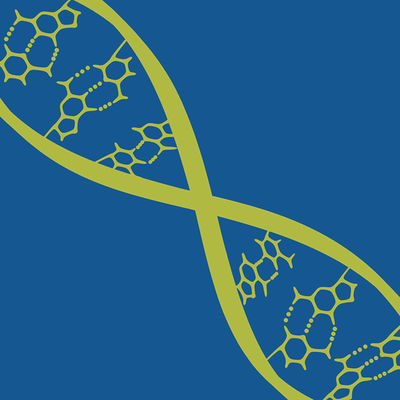Request Demo
Last update 08 May 2025
Acute asthma
Last update 08 May 2025
Basic Info
Synonyms Acute asthma, Acute asthma (diagnosis), acute asthma + [3] |
Introduction- |
Related
7
Drugs associated with Acute asthmaTarget |
Mechanism β2-adrenergic receptor agonists |
Active Org. |
Originator Org. |
Active Indication |
Inactive Indication |
Drug Highest PhaseApproved |
First Approval Ctry. / Loc. United States |
First Approval Date11 Mar 2005 |
Target |
Mechanism CysLT antagonists |
Active Org. |
Originator Org. |
Active Indication |
Inactive Indication |
Drug Highest PhaseApproved |
First Approval Ctry. / Loc. United States |
First Approval Date20 Feb 1998 |
Target |
Mechanism DNase I stimulants |
Active Org. |
Originator Org. |
Active Indication |
Inactive Indication |
Drug Highest PhaseApproved |
First Approval Ctry. / Loc. United States |
First Approval Date30 Dec 1993 |
103
Clinical Trials associated with Acute asthmaNCT06360185
Retrospective Study Investigating the Clinical Characteristic of Patients with Acute Presentation for Asthma to the A+E Department in a Busy Acute Hospital in England UK in Era of Biological Therapy for Asthma Between Jan 2019 & Jan 2024
Study team will obtain a list of all patients who have been seen in A+E over the past 6 years with a discharge diagnosis of asthma. Their history will be reviewed from their A+E notes. Team will obtain weight and height from Electronic prescribing tool and will obtain compliance information and past medical history from participant's GP records. Team will use participant's postcode to word out socio economic status quintile using office of national statistics tool. The following information will be taken from hospital documentation and from GP records.
Start Date01 Dec 2025 |
Sponsor / Collaborator |
NCT06785272
Magnesium Trial in Acute Asthma in Emergency Department
Despite optimal initial emergency department (ED) therapy, 50% of children with severe acute asthma have ongoing moderate-severe respiratory distress. Guidelines recommend intravenous magnesium (IVMg) for them, yet evidence for IVMg efficacy is scant and disparate. While early small Randomized Controlled Trials (RCTs) suggested hospitalization benefit, recent large observational studies found no association between IVMg and improved outcomes. IVMg therapy is resource-intensive, can cause hypotension and demands close monitoring. Previous RCTs only assessed early Mg effect at 1-2 hours, overlooked the peak effect of key co-interventions such as corticosteroids and did not use validated scores. IVMg use is variable and often delayed until ≥4 hours after ED therapy is started and after the hospitalization decision has been made. Thus, in observational studies children given IVMg are 6-10 times more likely to be hospitalized; these studies have major confounding and the true IVMg treatment effect is thus unknown. To conclusively determine if IVMg alters the exacerbation course, it must be given early, and the primary outcome measure should be the severity of respiratory distress measured at the peak effect of key co-interventions to focus on a clinically meaningful and objective effect. The Pediatric Respiratory Assessment Measure (PRAM)-a valid, discriminative, reproducible and responsive-to-change instrument-is thus the ideal primary outcome measure. Hospitalization outcome has major confounding by indication and MD perceptions.
Primary Aim: In children with acute asthma remaining in moderate-severe distress after 1 hour of initial ED therapy, is early IVMg therapy associated with a significantly greater improvement in respiratory distress, measured by PRAM, at 3 hours after starting the intervention, compared to placebo? Hypothesis: IVMg will yield significantly greater PRAM improvement of ≥1.0 point than placebo.
Expected Outcomes: This trial will clarify if there is an incremental benefit of IVMg in decreasing respiratory distress in pediatric refractory acute asthma. A positive result will establish a proven standard of care for this indication, with a need for Knowledge Translation (KT) to implement routine early IVMg therapy. A negative result will lead to de-implementation of IVMg which may also lead to cost savings.
Primary Aim: In children with acute asthma remaining in moderate-severe distress after 1 hour of initial ED therapy, is early IVMg therapy associated with a significantly greater improvement in respiratory distress, measured by PRAM, at 3 hours after starting the intervention, compared to placebo? Hypothesis: IVMg will yield significantly greater PRAM improvement of ≥1.0 point than placebo.
Expected Outcomes: This trial will clarify if there is an incremental benefit of IVMg in decreasing respiratory distress in pediatric refractory acute asthma. A positive result will establish a proven standard of care for this indication, with a need for Knowledge Translation (KT) to implement routine early IVMg therapy. A negative result will lead to de-implementation of IVMg which may also lead to cost savings.
Start Date01 Sep 2025 |
Sponsor / Collaborator |
NCT03277170
Pragmatic RCT of High-dose Oral Montelukast for Moderate and Severe Pediatric Acute Asthma Exacerbations
Objective: To determine the extent to which high-dose (30mg) oral montelukast, added to standard treatment in children with moderate and severe acute exacerbations improves outcomes.
Central Hypothesis: High-dose oral montelukast, added to standard treatment in children aged 5 to 17 years with moderate and severe acute asthma exacerbations, rapidly improves lung function, clinical severity, hospitalization rate and 72-hour symptom burden.
Secondary Hypotheses:
1. There are greater effects of high-dose oral montelukast on lung function and on the secondary outcomes in the presence of respiratory viral detection or leukotriene-mediated inflammation; and
2. There is an interaction between viral detection and urinary leukotriene 4 level with treatment-response.
Design: A two-arm, parallel randomized controlled trial of high-dose oral montelukast versus identical placebo, as add-on to standard treatment, in children aged 5 to 17 years with moderate and severe acute asthma exacerbations.
Intervention: High-dose oral montelukast added to standard treatment in comparison with standard treatment as the 2nd treatment-allocation arm.
Primary and Important Secondary Endpoints: For the Primary Aim, the primary outcome measure to be compared between arms will be change of %-predicted airway resistance by impulse oscillometry (IOS) at 5Hz (%R5) at 2 hours after treatment initiation. Secondary outcomes will include improvement of %-predicted FEV1 (%FEV1), clinical severity measured using the validated Acute Asthma Intensity Research Score (AAIRS), hospitalization rate, and 72 hour symptom burden using the Pediatric Asthma Caregiver Diary (PACD). For the Secondary Aim, the investigators will determine (1) The effects of high-dose oral montelukast on lung function and on our secondary outcomes in the presence of nasal viruses and of greater leukotriene-mediated inflammation; and (2) The degree of interaction between viral detection and urinary leukotriene E4 (LTE4) level with treatment-response.
Laboratory evaluations: The primary outcome (change of %R5) and select secondary outcomes (%FEV1, AAIRS, LTE4) will be measured before and again at 2 hours after treatment initiation. The other secondary outcomes will be measured at the time of hospitalization decision-making by the clinical team (hospitalization rate) or at 72-hours after treatment initiation (PACD).
Central Hypothesis: High-dose oral montelukast, added to standard treatment in children aged 5 to 17 years with moderate and severe acute asthma exacerbations, rapidly improves lung function, clinical severity, hospitalization rate and 72-hour symptom burden.
Secondary Hypotheses:
1. There are greater effects of high-dose oral montelukast on lung function and on the secondary outcomes in the presence of respiratory viral detection or leukotriene-mediated inflammation; and
2. There is an interaction between viral detection and urinary leukotriene 4 level with treatment-response.
Design: A two-arm, parallel randomized controlled trial of high-dose oral montelukast versus identical placebo, as add-on to standard treatment, in children aged 5 to 17 years with moderate and severe acute asthma exacerbations.
Intervention: High-dose oral montelukast added to standard treatment in comparison with standard treatment as the 2nd treatment-allocation arm.
Primary and Important Secondary Endpoints: For the Primary Aim, the primary outcome measure to be compared between arms will be change of %-predicted airway resistance by impulse oscillometry (IOS) at 5Hz (%R5) at 2 hours after treatment initiation. Secondary outcomes will include improvement of %-predicted FEV1 (%FEV1), clinical severity measured using the validated Acute Asthma Intensity Research Score (AAIRS), hospitalization rate, and 72 hour symptom burden using the Pediatric Asthma Caregiver Diary (PACD). For the Secondary Aim, the investigators will determine (1) The effects of high-dose oral montelukast on lung function and on our secondary outcomes in the presence of nasal viruses and of greater leukotriene-mediated inflammation; and (2) The degree of interaction between viral detection and urinary leukotriene E4 (LTE4) level with treatment-response.
Laboratory evaluations: The primary outcome (change of %R5) and select secondary outcomes (%FEV1, AAIRS, LTE4) will be measured before and again at 2 hours after treatment initiation. The other secondary outcomes will be measured at the time of hospitalization decision-making by the clinical team (hospitalization rate) or at 72-hours after treatment initiation (PACD).
Start Date01 Sep 2025 |
Sponsor / Collaborator |
100 Clinical Results associated with Acute asthma
Login to view more data
100 Translational Medicine associated with Acute asthma
Login to view more data
0 Patents (Medical) associated with Acute asthma
Login to view more data
4,065
Literatures (Medical) associated with Acute asthma01 May 2025·Journal of Allergy and Clinical Immunology: Global
CCR3 deficiency shifts adaptive to innate-driven immunity in asthma
Article
Author: Finotto, Susetta ; Yang, Zuqin ; Zirlik, Sabine ; Rieker, Ralf J ; Geppert, Carol I ; Mitländer, Hannah ; Grund, Janina C ; Krammer, Susanne
01 May 2025·Drug Discovery Today
Are leukotrienes really the world’s best bronchoconstrictors and at least 100 to 1000 times more potent than histamine?
Review
Author: Boehm, Thomas ; Jilma, Bernd
03 Apr 2025·Immunological Investigations
miR-142-3p Regulates Airway Inflammation Through PTEN/AKT in Children and Mice with Asthma
Article
Author: Li, Bo ; Huang, Huiman ; Sun, Bo ; Wei, Bing
10
News (Medical) associated with Acute asthma31 Mar 2025
Strengthened leadership team with key appointments, including Barry Quart, Pharm.D. as CEO, and David Szekeres as President, bringing deep clinical, regulatory, operational and strategic expertise Unveiled rapid clinical development program for rademikibart initially targeting acute care in asthma and COPD; expect to initiate parallel Phase 2 trials in 2Q 2025 with data expected in 2H 2026 Strong balance sheet with cash runway into 2027 and through key clinical catalysts SAN DIEGO, March 31, 2025 (GLOBE NEWSWIRE) -- Connect Biopharma Holdings Limited (Nasdaq: CNTB) (“Connect Biopharma”, “Connect” or the “Company”), a clinical-stage biopharmaceutical company focused on transforming acute and chronic care in asthma and chronic obstructive pulmonary disease (COPD), today reported financial results for the year ended December 31, 2024, and provided a business update. “2024 was a transformative year for Connect as we strengthened our leadership team, made significant progress in becoming more U.S.-centric, and unveiled a rapid clinical development strategy for rademikibart initially focused on the treatment of acute asthma and COPD exacerbations, an area where no biologic therapies have been approved. To date, rademikibart has demonstrated a differentiated clinical profile in Phase 2 clinical trials achieving rapid improvement in pulmonary function in less than 24 hours, which was sustained through 24 weeks, highlighting its potential in both acute and chronic care,” said Barry Quart, Pharm.D., CEO and Director of Connect Biopharma. “We are on track to initiate parallel Phase 2 trials of rademikibart as an adjunct to standard of care for the treatment of acute asthma and COPD exacerbations in the second quarter of 2025, with data expected in the second half of 2026. We believe rademikibart has the potential to fundamentally alter the treatment paradigm for millions of asthma and COPD patients who experience acute exacerbations every year.” Recent Highlights Clinical Program Highlights Parallel acute exacerbation trials of rademikibart as an adjunct to standard of care in asthma and COPD are on track to be initiated in the second quarter of 2025, with data expected in the second half of 2026. Corporate Highlights The Company continued making progress in becoming more U.S.-centric, including by: assembling an experienced U.S. management team with deep expertise in drug development and regulatory execution, including having collectively received U.S. Food and Drug Administration (FDA) marketing approval for 16 therapeutic products, and with deep expertise in business development, corporate strategy, finance and operations;relocating its corporate headquarters to San Diego, California, a leading global hub for innovative biopharmaceutical companies;transferring the initial manufacturing process for rademikibart to a U.S.-based contract manufacturing organization; andtransitioning to a U.S.-based independent registered accounting firm and voluntarily electing to become a domestic filer with the U.S. Securities and Exchange Commission (SEC), beginning with the Company’s Annual Report on Form 10-K for the year ended December 31, 2024, and on an ongoing basis with the regular filing of Annual Reports on Form 10-K, Quarterly Reports on Form 10-Q and Current Reports on Form 8-K. Financial Results for the Year Ended December 31, 2024 Cash, cash equivalents and short-term investments were $93.7 million as of December 31, 2024. Based on its current operating plans, the Company expects that its cash, cash equivalents and short-term investments will be sufficient to fund operations into 2027.Revenue for the year ended December 31, 2024, totaled $26.0 million, which included revenue recognized for the upfront fee, development milestones and cost reimbursements in connection with the license agreement with Simcere Pharmaceutical Co., Ltd. There was no comparable activity for the year ended December 31, 2023.Research and Development expense for the year ended December 31, 2024, was $29.3 million, compared with $53.0 million for the same period in 2023, a decrease of $23.7 million. The decrease in Research and Development expense was primarily due to the completion in late 2023 of the rademikibart global Phase 2b program in patients with chronic asthma and the rademikibart China pivotal trials for patients with atopic dermatitis.General and Administrative expense for the year ended December 31, 2024, was $19.2 million, compared with $16.1 million for the same period in 2023, an increase of $3.1 million. The increase in General and Administrative expense was primarily due to costs associated with executive departures, including cash severance and non-cash, share-based compensation expense related to certain stock option modifications.Net loss was $15.6 million, or $0.28 per share, for the year ended December 31, 2024, compared with a net loss of $62.1 million, or $1.13 per share, for the same period in 2023. About Connect Biopharma and Rademikibart Connect Biopharma is a clinical-stage biopharmaceutical company dedicated to transforming care for asthma and COPD. Headquartered in San Diego, California, the Company is advancing rademikibart, a next-generation, potentially best-in-class anti-interleukin-4-receptor alpha (IL-4Rα) antibody. With an initial focus on acute exacerbations—an area with significant unmet need—rademikibart has the potential to also drive chronic utilization in asthma and COPD amongst the millions of asthma and COPD patients in the U.S. who experience acute exacerbations annually. In a Phase 2 trial for asthma, rademikibart demonstrated strong efficacy and safety, with clinically meaningful reductions in exacerbations and rapid, statistically significant improvements in forced expiratory volume in one second, observed within one week—and in most cases, within 24 hours via home spirometry. For more information, visit www.connectbiopharm.com. Forward-Looking Statements This press release contains “forward-looking statements” within the meaning of the Private Securities Litigation Reform Act of 1995, as amended (the “Act”). Forward-looking statements are statements that are not of historical fact and include, without limitation, statements regarding future events, our cash balance, financial guidance, future financial and operating results and related expectations, business strategy and plans, prospective products (as well as their potential to achieve a differentiated, competitive, or favorable benefit or profile or trend, including on safety, tolerability, improvement, maintenance, clinical response, dosing, efficacy and/or convenience), planned or expected product approval applications or approvals, anticipated milestones, expected data readouts and enrollments, research and development plans and costs, potential future partnerships, expectations about existing partnerships, timing and likelihood of success, objectives of management for future operations, future results of anticipated product development efforts, and adequacy of existing cash and potential partnership funding to fund operations and capital expenditure requirements, as well as statements regarding industry trends. These statements are based on management’s current expectations of future events only as of the date of this press release and are inherently subject to a number of risks, uncertainties and assumptions, some of which cannot be predicted or quantified and some of which are beyond our control, including, among other things: the timing and amount of actual expenses, including, without limitation, our anticipated combined U.S. GAAP R&D and G&A expenses; the ability of our clinical trials to demonstrate safety and efficacy of our product candidates and other positive results; whether we will need expanded or additional trials in order to obtain regulatory approval for our product candidates; our ability to obtain and maintain regulatory approval of our product candidates; existing regulations and regulatory developments in the U.S., the People’s Republic of China, Europe and other jurisdictions; the ability of our current cash and investments position to support planned operations; our plans and ability to obtain, maintain, protect and enforce our intellectual property rights and our proprietary technologies, including extensions of existing patent terms where available; our continued reliance on third parties to conduct additional clinical trials of our product candidates, and for the manufacture of our product candidates for preclinical studies and clinical trials; and the degree of market acceptance of our product candidates, if approved, by physicians, patients, healthcare payors and others in the medical community. Words such as “aim,” “anticipate,” “believe,” “could,” “expect,” “feel,” “goal,” “intend,” “may,” “optimistic,” “plan,” “potential,” “promising,” “will,” and similar expressions are intended to identify forward-looking statements, though not all forward-looking statements necessarily contain these identifying words. The inclusion of forward-looking statements should not be regarded as a representation by Connect Biopharma that any of its expectations, projections or plans will be achieved. Actual results may differ materially due to the risks and uncertainties inherent in our business and other risks described in our filings with the SEC. Further information regarding these and other risks is included under the heading “Risk Factors” in our annual and periodic reports filed with the SEC. These forward-looking statements should not be taken as forecasts or promises nor should they be taken as implying any indication, assurance or guarantee that the assumptions on which such forward-looking statements have been made are correct or exhaustive or, in the case of the assumptions, fully stated in this presentation. Drug development and commercialization involve a high degree of risk, and only a small number of research and development programs result in commercialization of a product. Results in early-stage clinical trials may not be indicative of full results or results from later stage or larger scale clinical trials and do not ensure regulatory approval. You are cautioned not to place undue reliance on the scientific data presented or these forward-looking statements, which speak only as of the date of this presentation. Except as required by law, Connect Biopharma undertakes no obligation to publicly update any forward-looking statements, whether because of new information, future events or otherwise. Connect Biopharma claims the protection of the safe harbor for forward-looking statements contained in the Act for all forward-looking statements. This press release discusses product candidates that are under clinical study, and which have not yet been approved for marketing by the FDA or by any other regulatory agency. No representation is made as to the safety or effectiveness of these product candidates for the use for which such product candidates are being studied. The trademarks included herein are the property of the owners thereof and are used for reference purposes only. Connect Biopharma Holdings LimitedCondensed Consolidated Statements of Operations(in thousands, except per share amounts)(unaudited) Years Ended December 31, 2024 2023
Revenue: License and collaboration revenues$26,033 $- Total revenue 26,033 - Operating expenses: Research and development expense 29,256
53,002 General and administrative expense 19,229 16,054 Total operating expenses 48,485
69,056 Loss from operations (22,452)
(69,056)Total other income, net 7,047 7,070 Net loss before income tax (15,405)
(61,986)Income tax expense 223 120 Net loss$ (15,628) $(62,106)Basic and diluted net loss per ordinary share$ (0.28) $(1.13)Weighted-average ordinary shares outstanding, basic and diluted 55,213 55,067 Connect Biopharma Holdings LimitedCondensed Consolidated Balance Sheet Data(in thousands)(unaudited) December 31, 2024 2023 Cash, cash equivalents and short-term investments$93,708 $118,303Total assets$101,284 $127,375Total shareholders' equity$92,166 $101,497 Investor Relations Contact: Alex Lobo Precision AQ Alex.lobo@precisionaq.com(212) 698-8802 Media Contact: Ignacio Guerrero-Ros, Ph.D., or David SchullRusso Partners, LLCIgnacio.guerrero-ros@russopartnersllc.comDavid.schull@russopartnersllc.com(858) 717-2310 or (646) 942-5604
Phase 2Financial StatementExecutive ChangeLicense out/in
31 Jan 2025
Ethris Presents Positive Topline Phase 1 Data with mRNA Lead Candidate ETH47 for Uncontrolled Asthma
MUNICH, Germany I January 30, 2025 I
Ethris GmbH
, a leading biotechnology company pioneering next-generation RNA therapeutics and vaccines, today announced promising topline data from the completed Phase 1 clinical trial of its lead mRNA therapeutic candidate, ETH47, in healthy volunteers. Designed to address the upstream trigger of asthma exacerbations, ETH47 encodes interferon lambda (IFNλ), a protein essential for viral immunity in the respiratory tract. These topline results provide the first clinical validation of Ethris’ pioneering targeted RNA therapeutic approach and its ability to induce a downstream cascade of antiviral interferon-stimulated genes locally following nasal administration. Thomas Langenickel, MD, Chief Medical Officer at Ethris, presented the results on January 30
th
, 2025, at the mRNA-Based Therapeutics Summit Europe in Frankfurt, Germany.
“These positive Phase 1 results reinforce the promise of ETH47 as a potentially safe and transformative treatment option for asthma patients, while also validating our SNIM
®
and SNaP
®
proprietary technology platforms as a viable delivery option for mRNA therapeutics to the respiratory tract,” said Dr. Thomas Langenickel, Chief Medical Officer at Ethris. “This significant milestone demonstrates the ability of our technology to deliver precisely designed mRNA candidates to the respiratory tract, facilitating production of the encoded protein and engagement with the intended target. With this strong foundation, we look forward to advancing ETH47 into Phase 2 trials in 2025 and remain committed to exploring its potential to transform care for patients with asthma and broader respiratory conditions.”
The Phase 1 study assessed the safety, tolerability, and target engagement of ETH47 after nasal administration in 40 healthy participants.
Key Results from the Phase 1 Study:
Based on the encouraging Phase 1 results, Ethris filed a Clinical Trial Application (CTA) for a Phase 2a rhinovirus challenge study in asthma patients, planned to begin in Q2 2025. This upcoming trial will focus on evaluating the ability of ETH47 to reduce lower respiratory symptoms in asthma patients following rhinovirus infection.
About ETH47
ETH47 is Ethris’ first-in-class mRNA-based product candidate encoding interferon lambda (IFNλ) that was developed using the company’s Stabilized Non-Immunogenic mRNA (SNIM
®
RNA) platform, and uniquely designed to be administered locally to the respiratory tract through inhalation or nasal spray using Ethris’ proprietary Stabilized NanoParticle (SNaP
®
) LNP platform. ETH47 is meant to induce a mucosal innate immune defense response at virus entry sites as well as inhibit viral replication. ETH47’s versatile, virus- and mutation-independent mode of action has the potential to broadly address seasonal and emerging respiratory virus infections, including virus-driven exacerbation of chronic respiratory diseases such as asthma.
About Uncontrolled Asthma
Uncontrolled asthma is a significant burden for patients, including 4.4 million moderate to severe asthma patients in the US alone. Approximately 80% of acute asthma attacks (exacerbations) are associated with virus infections. Asthma exacerbations cause excessive inflammation and mucus hyperproduction. They remain a significant burden for patients, leading to increased healthcare costs and decreased quality of life. ETH47’s innovative mechanism of action aims to prevent those exacerbations at their source, potentially improving outcomes for millions of patients worldwide.
About Ethris
Ethris, a clinical-stage biotechnology company, has paved a new path from genes to therapeutic proteins, using its proprietary RNA and lipidoid nanoparticle technology platforms to discover, design and develop innovative therapies. With more than a decade as an mRNA pioneer, Ethris is a global leader in delivering stabilized mRNAs directly to the respiratory system via optimized formulation and nebulization technologies. The company is rapidly advancing its mRNA pipeline of immuno-modulation, protein replacement therapies, and differentiated vaccines, with the ultimate goal of improving patients’ lives.
For more information, visit
www.ethris.com
SOURCE:
Ethris
Phase 1VaccinemRNAsiRNAImmunotherapy
30 Jan 2025
Ethris Presents Positive Topline Phase 1 Data with mRNA Lead Candidate ETH47 for Uncontrolled Asthma
MUNICH, Germany--(
BUSINESS WIRE
)--
Ethris GmbH
, a leading biotechnology company pioneering next-generation RNA therapeutics and vaccines, today announced promising topline data from the completed Phase 1 clinical trial of its lead mRNA therapeutic candidate, ETH47, in healthy volunteers. Designed to address the upstream trigger of asthma exacerbations, ETH47 encodes interferon lambda (IFNλ), a protein essential for viral immunity in the respiratory tract. These topline results provide the first clinical validation of Ethris’ pioneering targeted RNA therapeutic approach and its ability to induce a downstream cascade of antiviral interferon-stimulated genes locally following nasal administration. Thomas Langenickel, MD, Chief Medical Officer at Ethris, presented the results on January 30
th
, 2025, at the mRNA-Based Therapeutics Summit Europe in Frankfurt, Germany.
“These positive Phase 1 results reinforce the promise of ETH47 as a potentially safe and transformative treatment option for asthma patients, while also validating our SNIM
®
and SNaP
®
proprietary technology platforms as a viable delivery option for mRNA therapeutics to the respiratory tract,” said Dr. Thomas Langenickel, Chief Medical Officer at Ethris. “This significant milestone demonstrates the ability of our technology to deliver precisely designed mRNA candidates to the respiratory tract, facilitating production of the encoded protein and engagement with the intended target. With this strong foundation, we look forward to advancing ETH47 into Phase 2 trials in 2025 and remain committed to exploring its potential to transform care for patients with asthma and broader respiratory conditions.”
The Phase 1 study assessed the safety, tolerability, and target engagement of ETH47 after nasal administration in 40 healthy participants.
Key Results from the Phase 1 Study:
Safety and tolerability: ETH47 was generally safe and well tolerated across all dose levels, with no serious or severe adverse events and no adverse events leading to discontinuation reported in the healthy participants. The study also demonstrated no systemic bioavailability of the mRNA, the produced protein IFNλ, or the proprietary lipidoid compound, minimizing the risk of off-target effects.
Dose-dependent target engagement: ETH47 exhibited a clear dose-dependent production of IFNλ in the nasal lining fluid exceeding predicted therapeutic levels. ETH47 administration also activated the mRNA expression of antiviral interferon-stimulated genes (ISGs) in nasal brush samples. These findings confirm ETH47’s pharmacodynamic activity and support its proposed mechanism of action.
Based on the encouraging Phase 1 results, Ethris filed a Clinical Trial Application (CTA) for a Phase 2a rhinovirus challenge study in asthma patients, planned to begin in Q2 2025. This upcoming trial will focus on evaluating the ability of ETH47 to reduce lower respiratory symptoms in asthma patients following rhinovirus infection.
About ETH47
ETH47 is Ethris’ first-in-class mRNA-based product candidate encoding interferon lambda (IFNλ) that was developed using the company’s Stabilized Non-Immunogenic mRNA (SNIM
®
RNA) platform, and uniquely designed to be administered locally to the respiratory tract through inhalation or nasal spray using Ethris’ proprietary Stabilized NanoParticle (SNaP
®
) LNP platform. ETH47 is meant to induce a mucosal innate immune defense response at virus entry sites as well as inhibit viral replication. ETH47’s versatile, virus- and mutation-independent mode of action has the potential to broadly address seasonal and emerging respiratory virus infections, including virus-driven exacerbation of chronic respiratory diseases such as asthma.
About Uncontrolled Asthma
Uncontrolled asthma is a significant burden for patients, including 4.4 million moderate to severe asthma patients in the US alone. Approximately 80% of acute asthma attacks (exacerbations) are associated with virus infections. Asthma exacerbations cause excessive inflammation and mucus hyperproduction. They remain a significant burden for patients, leading to increased healthcare costs and decreased quality of life. ETH47’s innovative mechanism of action aims to prevent those exacerbations at their source, potentially improving outcomes for millions of patients worldwide.
About Ethris
Ethris, a clinical-stage biotechnology company, has paved a new path from genes to therapeutic proteins, using its proprietary RNA and lipidoid nanoparticle technology platforms to discover, design and develop innovative therapies. With more than a decade as an mRNA pioneer, Ethris is a global leader in delivering stabilized mRNAs directly to the respiratory system via optimized formulation and nebulization technologies. The company is rapidly advancing its mRNA pipeline of immuno-modulation, protein replacement therapies, and differentiated vaccines, with the ultimate goal of improving patients’ lives.
For more information, visit
www.ethris.com
Phase 1VaccineClinical ResultmRNAsiRNA
Analysis
Perform a panoramic analysis of this field.
login
or

AI Agents Built for Biopharma Breakthroughs
Accelerate discovery. Empower decisions. Transform outcomes.
Get started for free today!
Accelerate Strategic R&D decision making with Synapse, PatSnap’s AI-powered Connected Innovation Intelligence Platform Built for Life Sciences Professionals.
Start your data trial now!
Synapse data is also accessible to external entities via APIs or data packages. Empower better decisions with the latest in pharmaceutical intelligence.
Bio
Bio Sequences Search & Analysis
Sign up for free
Chemical
Chemical Structures Search & Analysis
Sign up for free






